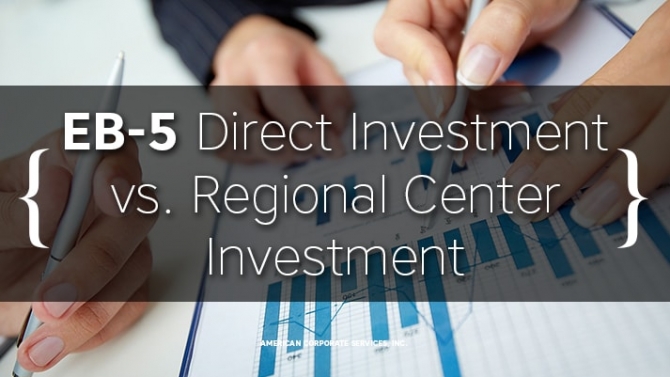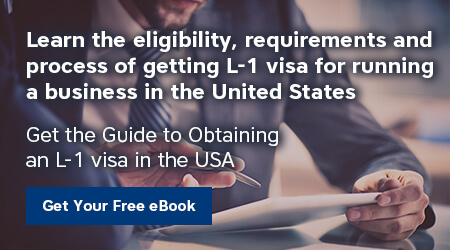There are two options for an EB-5 investment: 1) Direct investment or 2) Regional Center investment. While both methods provide access to permanent residence, the EB-5 investor should be familiar with the differences between the two options before investing.
A Direct investment is best suited for an investor who wants to own and be directly involved in the day-to-day operation of the company. The investor should be well-versed in business practices, since this option requires more time and effort. The investor should also formulate a business plan that will project the creation of ten jobs for qualified U.S. workers within two years after becoming a conditional, lawful permanent resident. A qualified U.S. worker is a U.S. citizen, lawful permanent resident, or other immigrant lawfully authorized to be employed in the United States. A Direct investment also could be provided by specialized labor-intensive companies. In such case, the Investor acts as an equity member, and company’s management – as a managing member. All qualified U.S. jobs should be direct – employees should receive W-2 form and be on an official payroll.
A Regional Center investment is best suited for an investor who would rather not participate in managing the day-to-day activities of the business. The benefit of a Regional Center investment is that Regional Centers are permitted to use economic models to count jobs. Thus, Regional Centers can solicit several to hundreds of EB-5 investors for their EB-5 projects, and the Regional Center is usually the one actually managing the project. In case or Regional Center, they could count direct, indirect and induced jobs.
Then there's the fact that Regional Center projects bundle investors together in all respects - the project doesn't get built until ALL of the investors have received their approvals and NONE of the investments get repaid to ANY investors until ALL investors have gotten their I-829 approvals. This means that the BEST investor (who gets through the approval process easily in 4-5 years) doesn't get their money back until the WORST investor gets to the finish line (in 9-10 years).
It’s important to note that both types of investments provide access to a green card for the investor and his/her family. However, Direct investment is less complicated and could be approved faster.
What It Means for You
Extending the deadline for the changes that everybody believes are coming (and are needed) is just a timing matter. It does not change the fundamental problems with the Regional Center program - it is overrun with bad deals that manipulate job creation and pay Migration Agents huge bribes to push investors into projects that will almost certainly not pay their money back. It's unfortunate that our Congress is so messed up that a few Regional Centers (like Related Companies in NYC and Hillary's brother) are able to lobby them to avoid making the changes that would protect investors, but the changes will eventually come and putting their money in a Regional Center project BEFORE the changes come would ludicrous.
Direct jobs projects, in most cases, offer full visibility and accountability to the investors, so they know what's happening with their money and they know who to call if they have questions (or who to sue if they don't like the results).
CTC projects, for example, require no further effort on investors’ parts if they don't want to. However, CTC allows direct investors the opportunity to meet with management and tour the property whenever they want. All direct investors receive monthly accounting statements showing exactly how their $500k investment is being used. Direct investors receive the same financial reports they would receive if they were the sole owner of the business.
With CTC Direct Jobs projects, each Laundry Plant WILL be built regardless of whether they have EB-5 investors or not, because they're good businesses and they have capital available to get the projects done (because they're good businesses), and each investor will get their money back when their individual approval process is complete, REGARDLESS of what the other investors are doing.
Finally, there's the jobs. If the econometric models used by Regional Centers are unattainable, the jobs created could fall short of the required number per investor. In that scenario – which, by the way, does happen – some investors will not be able to obtain permanent resident status. Direct Jobs investments, such as CTC, rely exclusively on direct jobs and don't claim to create indirect or induced jobs.
When the failures of Regional Center jobs keep piling up, it is becoming more likely that the USCIS may disallow current Regional Center job creation models. The inclusion of – often phantom – indirect and induced jobs – has temporarily benefitted large developers, but has also been difficult for the USCIS to validate.
Investors that know how to run successful businesses, who have inquisitive minds, and are skeptical (like many CTC investors from the Ukraine, Russia, and China) are the best investors. And, the best EB-5 investments for them are Direct Investments.










